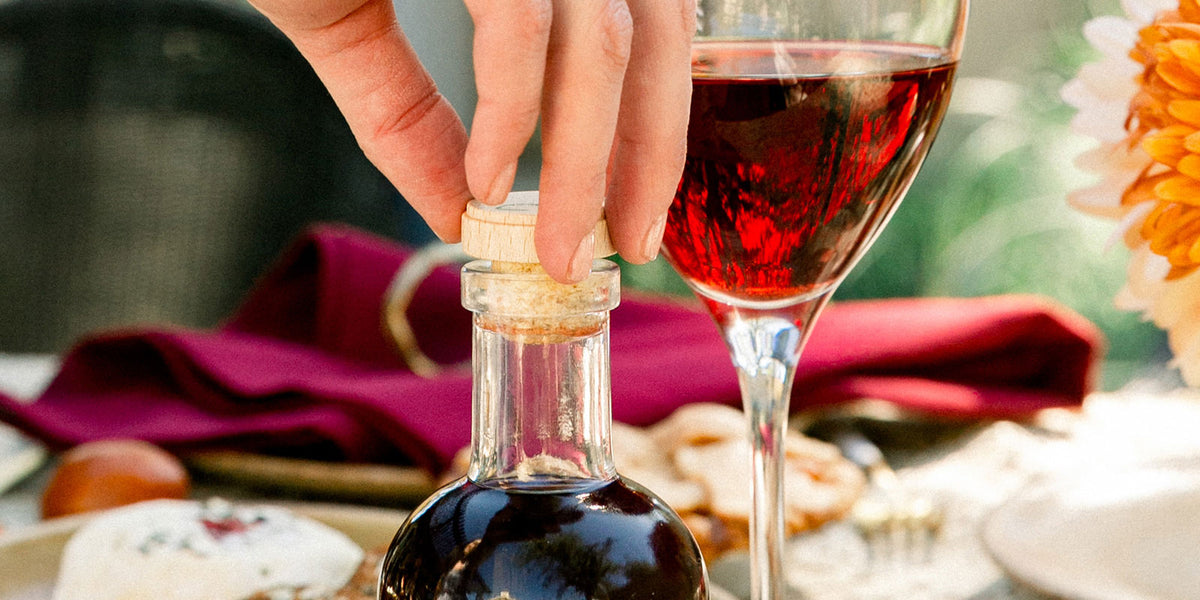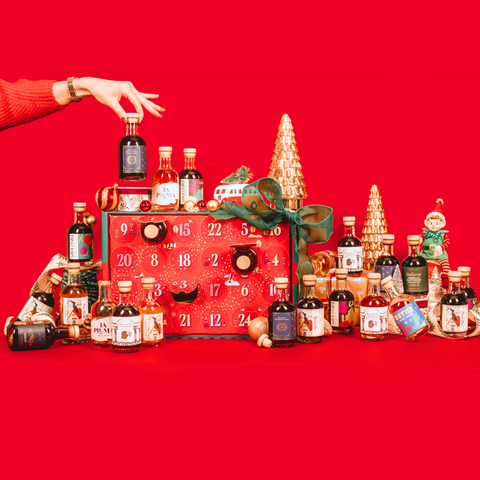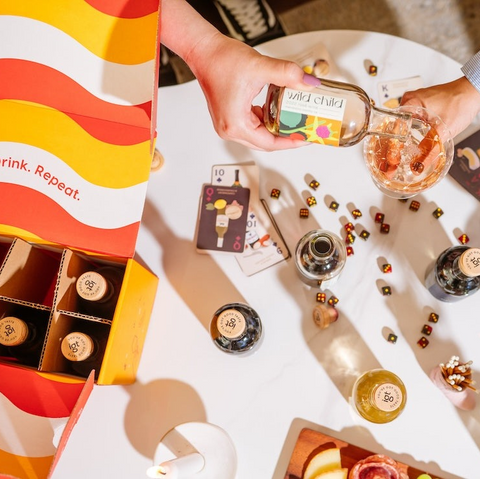Cork it, Screw it, Save it
It’s a weeknight and you’ve found yourself perusing the store aisles on the hunt for your next bottle of wine (because, let’s face it, sometimes Tuesdays are tough). While on your noble quest, you may have noticed the variety of closures that adorn the top of each unique bottle. Some are corked, while others have a simple screw cap. After finally deciding on an intriguing-looking Pinot Noir and heading home to savor that Tuesday treat, you discover another small dilemma. Since finishing an entire bottle of wine in one sitting Tuesday night might not work for your Wednesday morning meetings, you need to find a way to save the rest of your well-deserved vino. What’s the best way to do this?
In this guide, we will give some insight into the different types of wine closures, why they’re used, and some of the best ways to save your opened wine for another day.
Wine Cork vs. Screw Cap
Among winemakers, the type of closure chosen to preserve a bottle of wine primarily comes down to the type of wine and the preference of the winemaker themselves. However, there are other factors to consider as well. If you’ve ever wondered why your bottle of wine has been corked rather than screwed (or vice-versa), we’re about to get into it!
Types of Wine Corks
Even within the cork category, there are a few different types of cork closures that winemakers can choose from, because what’s life without a little variety?

Natural Cork
If you’ve ever purchased a bottle of wine, there’s a good chance it had a natural cork closure. Cork is by far the most common wine closure, with 70% of all wines and 89% of fine wines getting sealed with this familiar top. Natural cork is a renewable resource, coming from the bark of a cork oak tree. It gives most consumers the perception of a high-quality wine (although, as we will discuss, this isn’t always the case.) Cork seals the wine by expanding within the neck of the bottle, keeping the wine inside and most oxygen out. It can be beneficial to the aging process of wine by allowing minuscule amounts of oxygen to interact with the wine, adding complexity, and allowing it to mature – kind of like how you may have felt when deciding that wine was your new ~thing~.
The biggest downside to using natural cork is something known as the dreaded cork taint, which is something that we’ll get into later.
Synthetic Cork
Synthetic cork is another option that is available to winemakers. This imitation cork is typically made from plastic (polyethylene to be exact) or from plant byproducts, specifically bio-polyethylene. There is consistency in the production of synthetic cork, there is also consistency in the oxygen transfer to the wine that the cork is sealing, ensuring a predictable aging process. Synthetic cork is also quite durable, more affordable than natural cork, and it is not affected by the ghastly cork taint (we’re getting there, promise!)
Synthetic cork is made from polyethylene and is non-renewable, so this closure option falls short on the environmentally friendly side of things. Some recycling centers will take them, but it depends on the facility. (You can also consider upcycling your old wine bottles!) Some wine professionals also claim that the synthetic nature of these corks adds a subtle chemical smell to the aroma of the wine. Another downside to synthetic cork is that it can be so darn difficult to open. If you find yourself struggling to pull that cork out and have the urge to mutter unsavory phrases that your mother wouldn’t approve of – it’s not you; it’s the cork.
Other Corks
This final, miscellaneous category of corks includes colmated, multi-piece, micro-agglomerated, and agglomerated cork. The latter two are more popular in this category, and are essentially like a sort of cork particle board that’s held together by a binder or glue. These types of cork tend to break down easily, which makes them best suited for wines that will be consumed within six months of bottling.
Screw Cap
In the 1970s, our Aussie friends introduced and popularized a new way to preserve wines, and it could be said that they really … screwed things up *ba dum, tss*.
We’re kidding of course. The screw cap was patented and used commercially in the '70s, and winemakers in Australia are the ones responsible for popularizing this new method. In fact, screw tops are the closure of choice for most wine producers in Australia and New Zealand, who are known for their delicious varieties of Sauvignon Blanc. They are used across all varieties and price points, contradicting the popular notion that fine wines must be sealed with cork.

One large upside to the screw cap is that it provides consistency to the oxygen levels that are exposed to the wine. Screw caps can also provide longevity to the wine, although this is a controversial topic among seasoned winemakers. These closures are also affordable, easy to open, and convenient. They also completely rid winemakers of the horrid cork taint, which we will talk about soon.
Be sure to recycle your screw caps! Made from aluminum, infinitely-recyclable resource which requires 95% less energy to recycle than to create “primary aluminum” from raw ore. In fact, about 75% of all aluminum produced in history is still in use - that’s nearly a billion tons of endless recyclability!
Unfortunately, wines are more prone to reduction when sealed with screw caps, meaning that they do not have enough contact with oxygen to age, and they may even lose some of their complexity. This questionable aging ability is another negative factor to consider, although this claim is contested between cork and screw cap advocates.
Screw caps are easy to put back on and pop in the fridge, and bottles with this cap can save footprint space as they can be stored standing straight up as opposed to on their side like wines with natural cork.
What is Cork Taint?
We’ve kept you wondering and waiting for long enough. It’s time to discuss cork taint.
Cork taint, with its unfortunate and unpleasant name, is something that can happen to natural cork closures. Basically, cork taint is the chemical compound known as TCA (2,4,6-trichloroanisole). TCA affects wood-derived materials, such as natural cork, and it occurs when chlorine comes into contact with certain fungi during cork processing.

The good news is, although it sounds pretty icky, cork taint is harmless and does not happen often. The downside is that it can negatively affect wine aromas, giving it the essence of a wet dog or a damp basement. It goes without saying, but those are typically aromas that winemakers want to avoid.
Can You Age Wine With Its Original Stopper?
Now that you’re effectively an expert in the different types of wine closures with their positives and shortfalls, you may be asking yourself – can you preserve your unfinished bottle of wine with its original stopper?
In short, it depends on how you store the unfinished wine afterward. The key is to minimize the wine’s contact with oxygen so that it loses as little of its aroma and complexity as possible. Re-corking your wine properly or putting the screw cap back on is a good way to keep unwanted oxygen out. However, if you’ve lost or broken the original closure for your bottle of wine, a stopper is an effective and sometimes better option for keeping your unfinished wine fresher, longer.
Types of Wine Stoppers
There are two main types of wine stoppers out there: decorative rubber stoppers and vacuum pump stoppers.
Rubber Stoppers
Rubber stoppers can be fun, decorative, and act as a cute little hat for your bottle of unfinished wine (they can also be a great gift for any wine lover, you can thank us later). These stoppers act as a replacement for cork if the original has broken or is too difficult to put back in. They’re a good option if you plan to finish that bottle of wine in the next 1-2 days.

Vacuum Pump Stoppers
Vacuum pump stoppers are pricier than the typical rubber stopper, and they allow the opened bottle to stay better, longer. Vacuum pumps are a popular option in restaurants and bars, these stoppers pump air out of the bottle, minimizing the amount of oxygen that could interfere with the wine giving you a couple extra days to sip on that bottle.

How to Store Wine and Keep it From Going Bad
To preserve that precious last bit of wine, here are a few of our best tips to keep your new favorite bottle fresh for another day.
Re-Cork or Use a Stopper
Like we established above, re-corking your wine or using a wine stopper is an effective option for keeping your wine tasting great for an extra couple of days.

Refrigerate It
Ye olde refrigerator is an excellent choice for storing your opened bottle of wine, even if it’s a red! The cooler temperatures in your fridge can help slow the process of the wine breaking down and keep it good for up to five days.

Use a Wine Preservation System
This option is better for wine enthusiasts, as wine preservation systems can tend to be pretty pricey. One preservation system/stopper that we’ve already talked about is a vacuum pump. Another is an inert wine gas preservation system, such as a Coravin, which works by puncturing a hole through the cork of a wine bottle to extract the wine and replacing the wine with argon gas. This way, the wine is never exposed to much oxygen, and you can essentially “open” your bottle of wine without truly “opening” it.

Use Smaller Bottles
With a smaller bottle of wine, you’ll be more likely to finish the entire thing, and the smaller bottle allows for less oxygen to interact with the wine. It just so happens that at In Good Taste, we specialize in perfectly sized pours, so you’ll always have fresh wine to enjoy.

Finish the Bottle
There’s no wine left to store if you just finish the bottle. We pass no judgment here for your weekday wine consumption. As we’ve already established, Tuesdays can be hard.

Congratulations! You’re now an expert in wine closures, stoppers, and storage! The next time you’re out with your friends, you can impress them with your litany of knowledge as you enjoy that perfectly poured and stored — glass of wine. Cheers!




